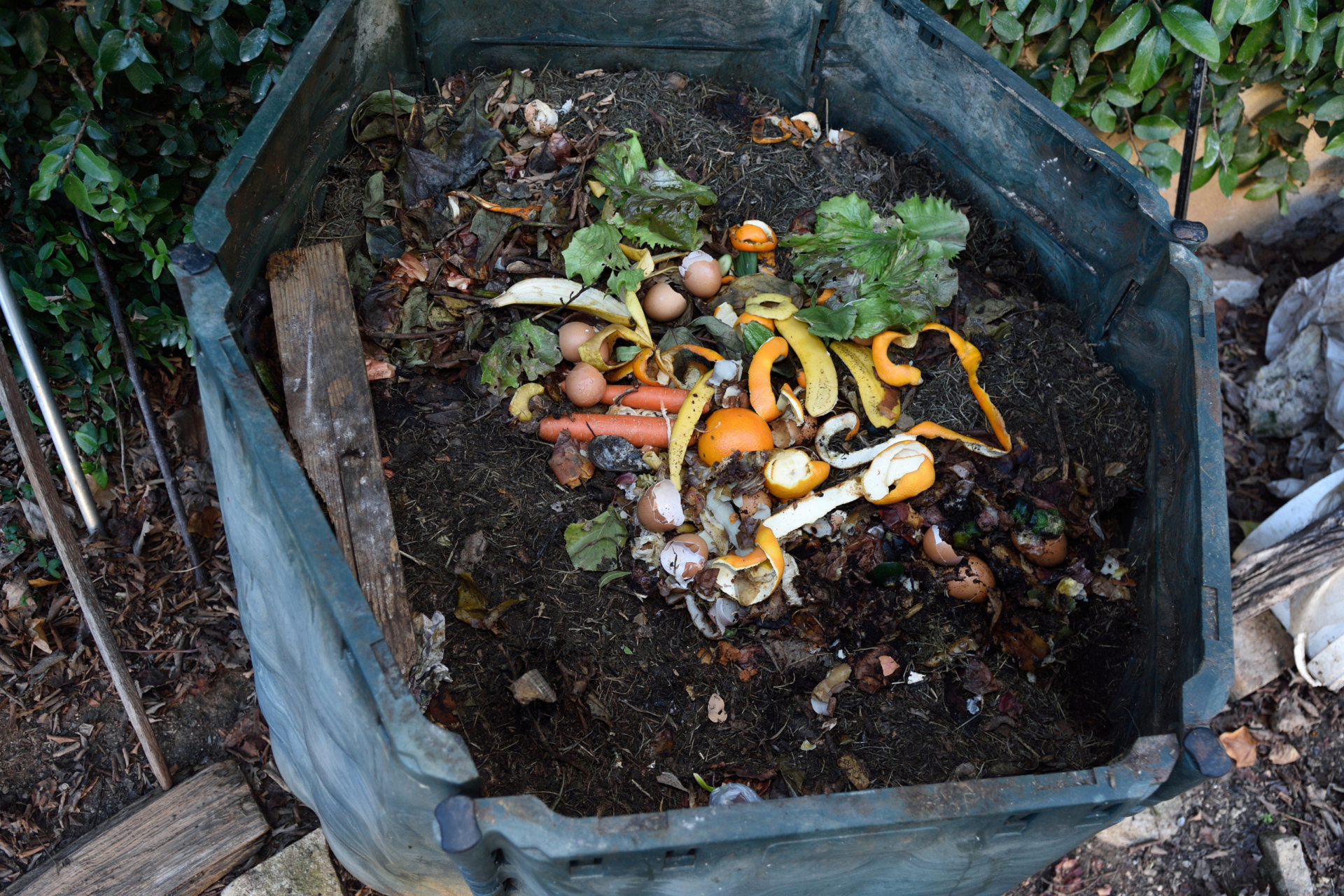Maintaining a Compost Pile
The organisms that break down the organic matter need nitrogen for rapid and thorough decomposition of the plant material. You may wish to occasionally add cottonseed meal or dried blood to provide extra nitrogen.
The composting organisms also need water. To hasten the composting process, keep the pile moist but not soggy. Inadequate moisture will reduce microbial activity, while excess moisture may cause undesirable anaerobic decomposition and unpleasant odors. The pile can also be moistened occasionally with a garden hose during dry periods.
A compost pile will decompose more efficiently if the microorganisms have plenty of oxygen. You can introduce air into the pile by turning it and mixing it with a spading fork or similar tool.
A pile that has been built in layers, as described above, should be turned for the first time about four weeks after its construction. With a fork, spade, or similar tool, lift the pile’s lower layers on top of the upper layers to mix the contents.
Locating two or three compost bins side by side can make the turning process easier and simpler; just shift the material from one bin to the other. During the warm months, the pile should be turned about once a month. In cooler weather, decomposition is slower and during the winter very little decomposition occurs. A well-managed compost pile will break down in four to six months.
Problems will develop if the pile is not working properly. These problems include unpleasant odor, slow decomposition, a dry pile, or standing water. The solution to a problem depends on its cause. In general, turning the pile, adding water, maintaining a mixture of dry and moist materials, or adding nitrogen will solve the problem.
As the plant materials decompose, the pH of the pile is lowered, meaning that its acidity is increased. As the process continues, however, the pH eventually rises to the neutral level of 7.0.

